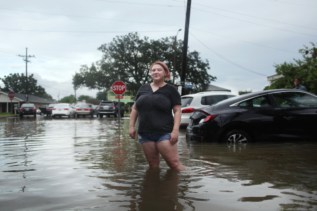“I think the flood hazard is the Achilles’ heel of the United States,” says Carol Friedland in this wide-ranging interview about the effects of hurricanes on homes and other buildings. Friedland – a researcher based at Louisiana State University – examines whether current building regulations are fit for purpose against hazards associated with hurricanes.
She believes that buildings are fairly well protected against wind hazards, but planners and local authorities need to adapt to the increasing risk of flooding due to heavy rains and storm surge. According to Friedland’s calculations, homes and businesses are protected 7 times more from wind hazards than from flood hazards.
Recent high-profile hurricane events such as Katrina, Irma and Harvey have revealed the strengths and vulnerabilities of various US cities. Part of Friedland’s work also involves modelling how hurricane risks are changing due to sea-level rise and increased subsidence. She believes that we need to look at flood hazards from a more dynamic perspective, rather than relying on historic data.
Urban resilience
For more information about how the US is responding to flood risk, see the Physics World short documentary, Testing the Waters in New Orleans. The film explores how scientists are working with residents in the Gentilly district of New Orleans to help make their neighbourhood more resilient to flooding.




